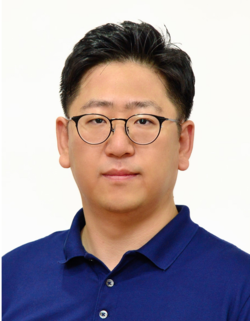The Korea Institute of Science and Technology (KIST) said Wednesday that its research team has developed a method to use ultrasonic waves to recharge electronic devices implanted in the human body.

According to KIST, the number of patients using implantable electronic devices, such as artificial pacemakers and defibrillators, is increasing worldwide due to advancements in medical technology and the aging population.
However, to replace the power source of an implantable electronic device, hospitals have to conduct incisional surgery to replace the battery, causing complications. Accordingly, the need for a technology to charge the battery by wirelessly transmitting power inside the human body is emerging.
The team, led by Professor Song Hyun-cheol of the Electronic Materials Research Center, has developed an ultrasonic wireless power transmission technology that can solve this problem.
According to Professor Song, standard wireless power transmission technologies include electromagnetic induction and magnetic resonance. While electromagnetic induction is a technology already in use through smartphones and wireless earphones, it cannot pass through conductors such as water or metal. As a result, the charging distance is very short.
There are also disadvantages as it can harm the body due to heating problems during charging.
The magnetic resonance method may cause interference with wireless communication frequencies, such as Wi-Fi or Bluetooth because the resonance frequencies of the magnetic field generating device and the transmitting device must exactly match.
Therefore, instead of electromagnetic waves or magnetic fields, the research team used ultrasound as an energy transmission medium to be safe enough to use when diagnosing fetal conditions. However, the conventional energy transfer technology using ultrasound had low energy efficiency, making it difficult to commercialize.
To resolve this issue, the team developed a device that receives ultrasonic waves and converts them into electrical energy using the triboelectric power principle, which can convert even very small mechanical vibrations into electrical energy.
The KIST said the research team significantly increased the ultrasonic energy transmission efficiency from less than 1 percent to more than 4 percent by adding a ferroelectric material to the triboelectric generator.
Through the device, the team succeeded in charging more than 8mW of power at a distance of six centimeters, enough to turn on 200 LEDs simultaneously. The team also confirmed that the device had high energy conversion efficiency and produced almost no heat.
“The study showed that electronic devices can operate using wireless power charging through ultrasonic waves,” Professor Song said. “Therefore, if we improve the stability and efficiency of the device further, we expect that we will be able to apply the technology to wireless implantable sensors.”
Energy & Environmental Science published the results of the study.

